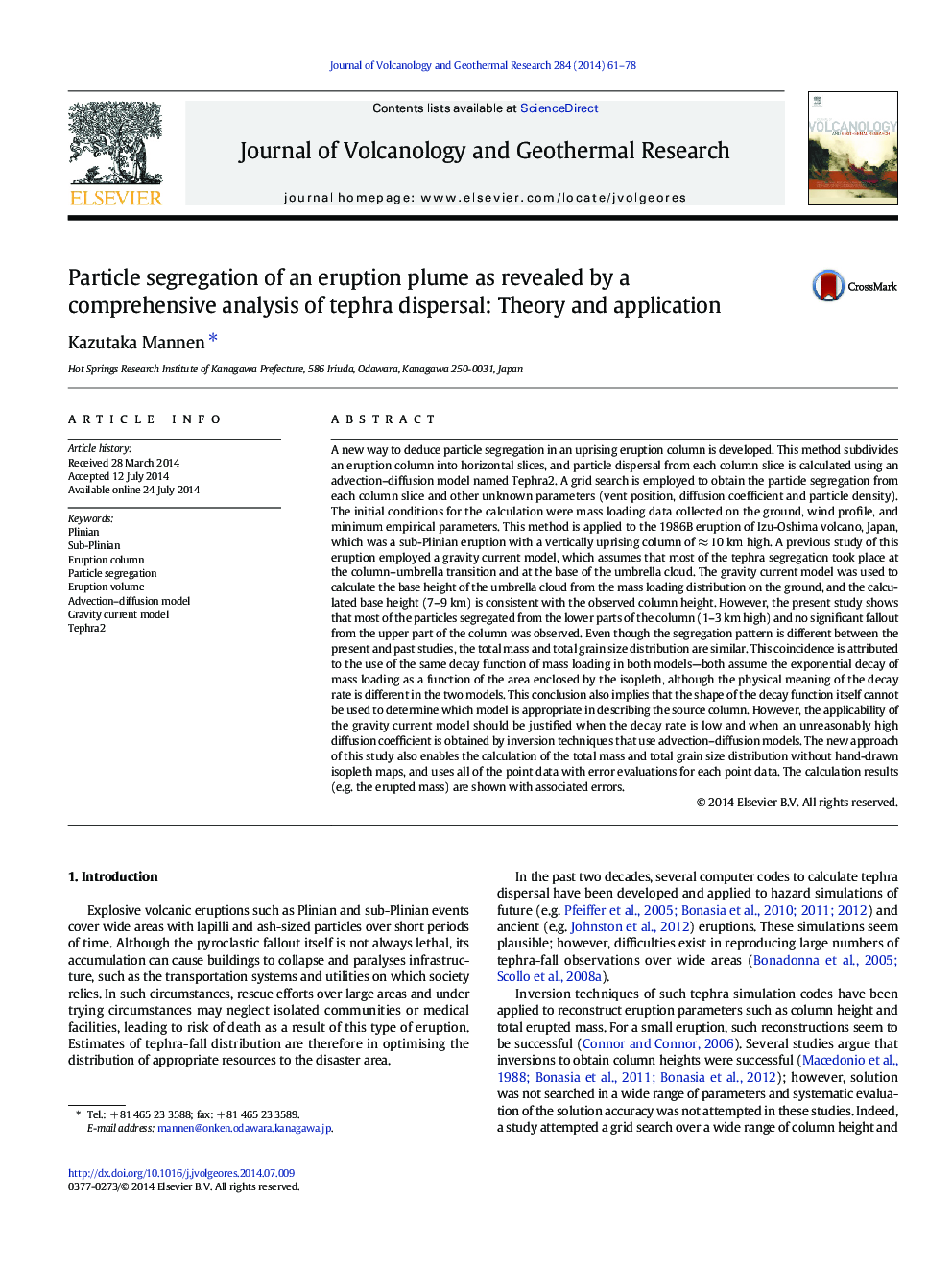| کد مقاله | کد نشریه | سال انتشار | مقاله انگلیسی | نسخه تمام متن |
|---|---|---|---|---|
| 4713099 | 1638338 | 2014 | 18 صفحه PDF | دانلود رایگان |
• A new way to deduce mode of particle segregation in an uprising column is developed.
• Application to a sub-Plinian and extensive fallout from lower column is shown.
• This approach deduces the segregation pattern and the theoretical isopleth at once.
• Volcanologists need no longer use arbitrarily drawn isopleths and empirical theories.
• Criterion to assume extensive umbrella fallout is also discussed.
A new way to deduce particle segregation in an uprising eruption column is developed. This method subdivides an eruption column into horizontal slices, and particle dispersal from each column slice is calculated using an advection–diffusion model named Tephra2. A grid search is employed to obtain the particle segregation from each column slice and other unknown parameters (vent position, diffusion coefficient and particle density). The initial conditions for the calculation were mass loading data collected on the ground, wind profile, and minimum empirical parameters. This method is applied to the 1986B eruption of Izu-Oshima volcano, Japan, which was a sub-Plinian eruption with a vertically uprising column of ≈ 10 km high. A previous study of this eruption employed a gravity current model, which assumes that most of the tephra segregation took place at the column–umbrella transition and at the base of the umbrella cloud. The gravity current model was used to calculate the base height of the umbrella cloud from the mass loading distribution on the ground, and the calculated base height (7–9 km) is consistent with the observed column height. However, the present study shows that most of the particles segregated from the lower parts of the column (1–3 km high) and no significant fallout from the upper part of the column was observed. Even though the segregation pattern is different between the present and past studies, the total mass and total grain size distribution are similar. This coincidence is attributed to the use of the same decay function of mass loading in both models—both assume the exponential decay of mass loading as a function of the area enclosed by the isopleth, although the physical meaning of the decay rate is different in the two models. This conclusion also implies that the shape of the decay function itself cannot be used to determine which model is appropriate in describing the source column. However, the applicability of the gravity current model should be justified when the decay rate is low and when an unreasonably high diffusion coefficient is obtained by inversion techniques that use advection–diffusion models. The new approach of this study also enables the calculation of the total mass and total grain size distribution without hand-drawn isopleth maps, and uses all of the point data with error evaluations for each point data. The calculation results (e.g. the erupted mass) are shown with associated errors.
Journal: Journal of Volcanology and Geothermal Research - Volume 284, 1 September 2014, Pages 61–78
